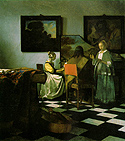
Celebrating Gardner’s art of audaciousness
http://www.boston.com/ae/music/articles/2011/05/13/chamber_opera_a_place_of_beauty_recalls_isabella_stewart_gardners_art_of_audaciousness/?page=2Most Bostonians know of Isabella Stewart Gardner from the museum in the Fenway that bears her name, and many know that she was one of the foremost art collectors and cultural patrons of her time, friend to Henry James and John Singer Sargent, among many others. But who was she, as a person?
For an answer, you need go no further than the stretch of Beacon Street that sits between Berkeley and Clarendon streets in the Back Bay. She lived there, at 152 Beacon, with her husband, John Lowell Gardner Jr., and the vast art collection they would amass. Her townhouse disappeared many years ago, but a plaque sits there today, stating that “Mrs. Jack’’ had forbidden anyone to have her address after she moved to the Fenway in 1902. Sure enough, today the street numbers on Beacon go from 150 to 154.
Gardner’s self — mercurial, unwilling to be bound by tradition — is on full display in “A Place of Beauty,’’ a new chamber opera being premiered this weekend. A co-commission by the chamber opera company Intermezzo and the Chamber Orchestra of Boston, the one-hour opera is the creation of Boston composer Robert Edward Smith to a libretto by William Fregosi, Intermezzo’s set and lighting designer, and Fritz Bell.
“I think one of the attractive things for modern audiences is that she was such a free spirit,’’ said David Feltner, who conducts Chamber Orchestra of Boston. “She wasn’t constrained by a lot of the social customs of her time. There were certain expectations put on her. But she was an early feminist, and she just had such a flair for doing things that seemed outlandish to Boston society.’’
She wore revealing (for the era) clothes, liked to attend boxing matches and hockey games, and famously commemorated Boston’s 1912 World Series win over the New York Giants by showing up at a Boston Symphony Orchestra concert wearing a headband that read, “Oh, you Red Sox!’’ It all sounds tame now, but a century ago, it was anything but.
Representing the mores of the time in the opera is a character called The Boston Matron (sung by mezzo-soprano Janna Baty), who goes into convulsions at each of Gardner’s eccentricities. “She teeters on the edge of farce,’’ said Smith. “She’s so outraged by everything Isabella does it becomes comical.’’
Much of the opera centers around the relationship of Jack and Isabella — how his calm demeanor played the foil to her audaciousness. “A lot of Jack’s music could be mistaken for Victorian parlor songs,’’ Smith said. “They have that kind of cozy, comfy quality about them.’’ He described a scene in which she puts in her calendar all the supposedly scandalous things she plans to do.
“And while she’s singing with very lively, fluttery music, Jack comes in and sings a love song about her. And Jack’s music is very comforting and sedate, and her music is very lively and jumpy. They mesh, but he’s the one that keeps her stable.’’
The opera begins during the famous 1990 heist from the Gardner Museum. Isabella’s ghost is summoned, and her story is told in a kind of extended flashback. For all her high spirits, the plot revolves around two tragic events: The death of the couple’s 2-year-old son in 1865, and Jack’s death in 1898.
Smith scored the piece for eight instruments — five strings and three winds — and Feltner described the music as tonal and deeply lyrical. “The singers are having a great time with it because it’s something they can really sink their teeth into and sing really gorgeous melodies.’’ Smith said that although he wrote the opera fairly quickly, “sometimes something written looks good in a diary or a letter but then it’s not easy to set to music.’’ He remembers in particular one line of Gardner’s: “America is a very young country, and has very few opportunities for seeing beautiful works of art.’’
“And that looks wonderful on the page,’’ Smith explained. “But I think I devoted an entire week to that line, because every time I wrote something it sounded like Up With People.’’
Perhaps the most moving moment in the opera comes after Jack’s death, when Gardner decides to leave Beacon Street and build the museum that was his dream, not hers. She sings a lament, having not realized until then how much she depended on him. Feltner called it “almost Handelian’’ in its intensity.
“Barbara [Kilduff, soprano] is so into it that last night she got me,’’ he said. “And I wrote the thing. I’m not supposed to cry at my own music. . . . It was like I was hearing it for the first time, and someone else wrote it.’’
Radius to Longy The Radius Ensemble has been named ensemble in residence at the Longy School of Music in Cambridge, beginning next season. The chamber group will play a four-concert series in Longy’s Pickman Hall and participate in master classes and a student composition competition. The group’s residencies at the Massachusetts Institute of Technology and the Rivers School Conservatory in Weston will end after this season, though Jennifer Montbach, Radius’s artistic director, said that the ensemble will play one concert at MIT next season.

No comments:
Post a Comment